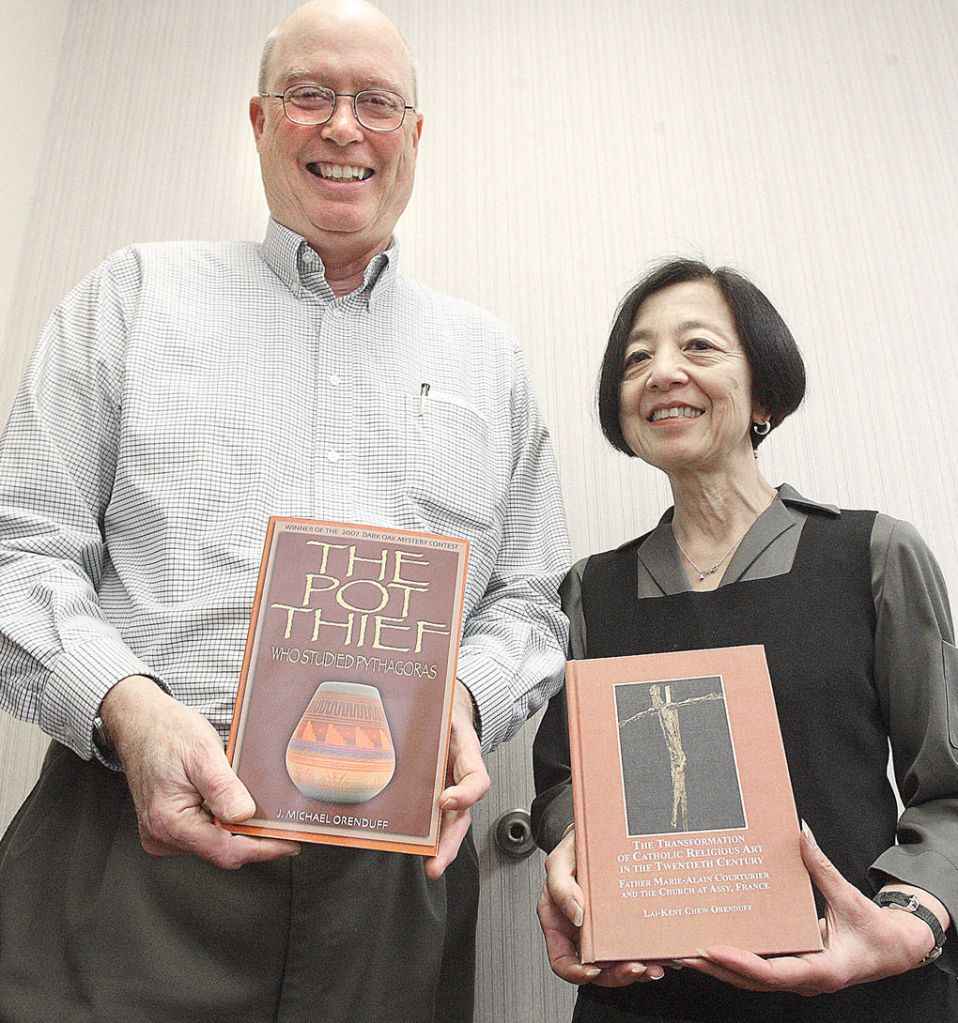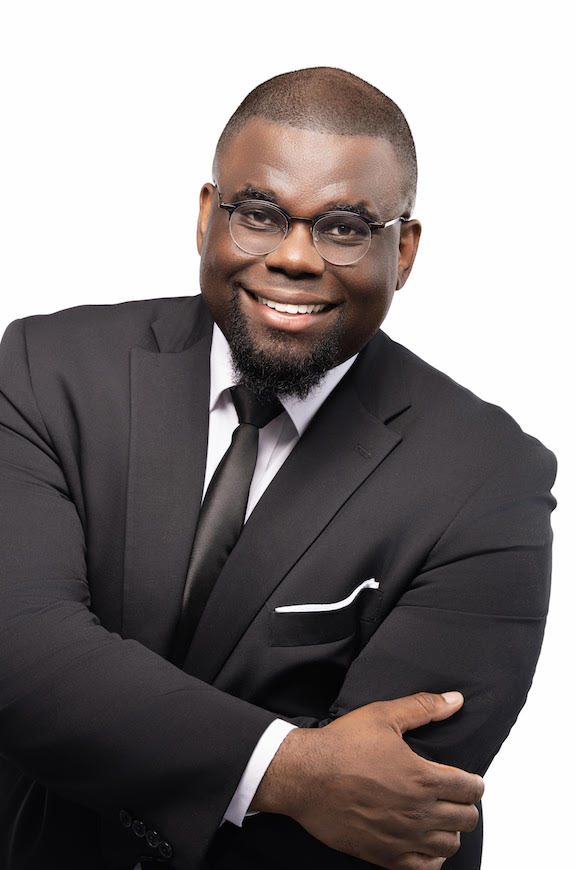A Marriage of Words
Published 11:56 pm Wednesday, May 27, 2009

- Paul Leavy/The Valdosta Daily Times
VALDOSTA — Reading Lai-Kent Chew Orenduff’s “The Transformation of Catholic Religious Art in the Twentieth Century,” one may wonder if she isn’t the inspiration behind Susannah in her husband J. Michael Orenduff’s book, “The Pot Thief Who Studied Pythagoras.”
Ask this married team of authors if that’s the case and they both laugh. As a writer of fiction, Michael Orenduff has learned that your life can inspire your book, but your book isn’t necessarily your life.
Orenduff’s book is the first in a planned series of novels about Hubert Schuze, a New Mexico dealer in Native American artifacts, primarily old clay pots. Schuze is essentially a good guy, but some question how he attains his inventory, i.e. the “Pot Thief” of the title. Right or wrong, given his reputation, Hubie is approached by a man wanting him to steal a 1,000-year-old pot from a museum. As Hubie weighs his options, he is pulled into a murder case as a suspect but extracts himself by becoming a detective.
Mike Orenduff writes a fun mystery novel with “The Pot Thief Who Studied Pythagoras.” Hubie is a fine character who, indeed, studies the ancient mathematician, philosopher and mystic Pythagoras throughout this book. Much like author Kinky Friedman fuels his mysteries with fascinating side bars and observations, Orenduff does the same. Hubie ruminates on various matters, especially art with his friend and ally Susannah.
Art is the subject of Lai-Kent Chew Orenduff’s “The Transformation of Catholic Religious Art in the Twentieth Century: Father Marie-Alain Courturier and the Church at Assy, France.” Lai Orenduff’s work is an academic book, well researched, exploring the life of Courturier, a Catholic priest who struggled to introduce the 20th century’s abstract art into the church.
Courturier was a seeker. Prior to the priesthood, he tried his hand as an artist. He was politically active. He fought with the French Army in World War I. Though austere as a priest, Courturier continued seeking new connections and experiences, especially in art.
While visiting the U.S. in 1939, Courturier became an exile. Nazi Germany invaded his native France, and Courturier could not return home until the end of World War II. Living in America, Courturier became a familiar within the modern-art circles. He became convinced that if the church’s art were to remain relevant, the church must seek modern artistic expressions.
He introduced this concept at an interesting time, Orenduff notes. The Catholic Church did not wish to embrace the kitsch, mass-produced religious art. The church believed individual art, through individual expression, was essential. Kitsch art was too secular. Yet, the church did not wish to embrace modern art, because it or the artists were often viewed as either profane, warped, or non-Catholic.
Courturier believed that modern art spoke to modern people. It did not matter if the artist was a believer or an agnostic but rather that the artwork had the power to inspire belief in others. “Father Courturier was convinced that the Church’s power and authority could be revitalized through a change in church art politics,” Orenduff writes. Courturier wasn’t trying to undermine the church but rather maintain its relevance in a modern world.
The Orenduffs have written two very different books, which they were writing and preparing for publication at the same time. They never got in each other’s way as writers. She wrote her work on the large computer in their home. He wrote his book on a laptop. Sometimes, they switched computers.
With both working on books, they had an immediate source to help them through rough patches of writing. He read her pages. She read his. They offered each other constructive advice. Working on such different projects, reading each other’s work provided a welcome change of pace from their individual books.
Working together, though independently, was no problem for the Orenduffs. Their relationship started as high school sweethearts. They worked their way through school together, married, and as professors and college administrators have often worked on the same campuses. They are both on the faculty of Valdosta State University. The Orenduffs have two grown children, a son who is a dean at Columbia University, and a daughter in Poland on a Fulbright scholarship.
As for writing, Lai Orenduff is working on various academic papers. Mike Orenduff is writing the continuing adventures of Hubert Schuze.
He hopes to see the second Schuze novel, “The Pot Thief Who Studied Ptolemy,” released this fall. “Ptolemy” is finished and “Pythagoras” contains a few sample chapters of the second book. He is almost finished with the fourth Schuze novel. One will be called “The Pot Thief Who Studied Einstein,” while the other will be called “The Pot Thief Who Studied D.H. Lawrence.”
As most good mystery series do, Orenduff sticks with the formula of the first book, adding that readers will be able to pick up any of the books and jump right in. Hubie Schuze deals in antiquities, studies various philosophies and sciences, and sticks to his New Mexico. It is an environment that Orenduff knows well enough that New Mexico Gov. Bill Richardson provided a blurb for the book.
Before returning soon to New Mexico for a book tour, Mike Orenduff has a book signing this weekend in Valdosta.
BOOK SIGNING
Author Mike Orenduff has a book signing.
When: 11 a.m.-3 p.m. Saturday,
Where: WaldenBooks, Valdosta Mall.
Price: The book costs $14.95.
More information: Visit the Web site www.orenduff.org.
Lai Orenduff’s hard-cover book, “The Transformation of Catholic Religious Art in the Twentieth Century,” contains color plates, and is published by the Edwin Mellen Press. This academic book costs $109.





